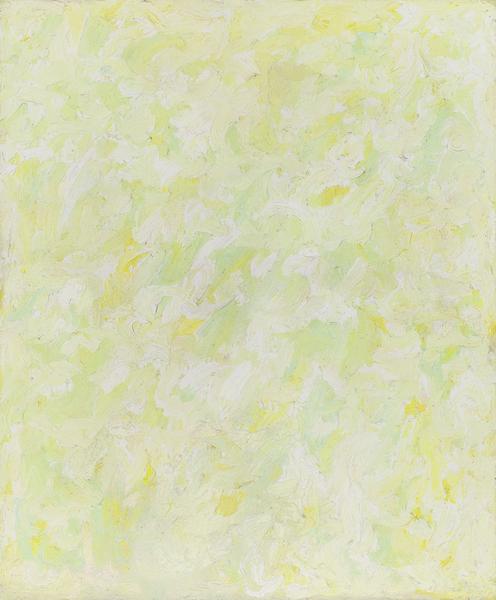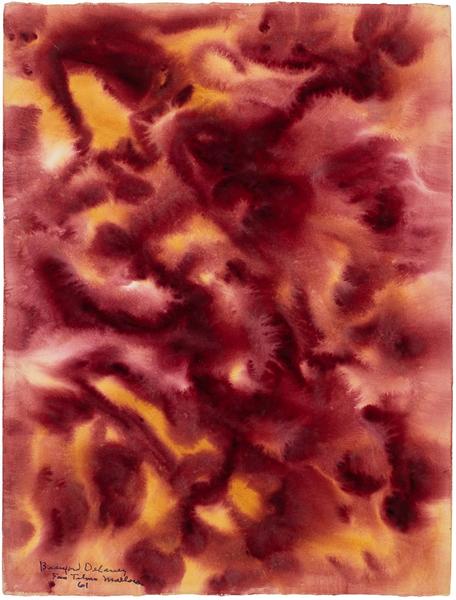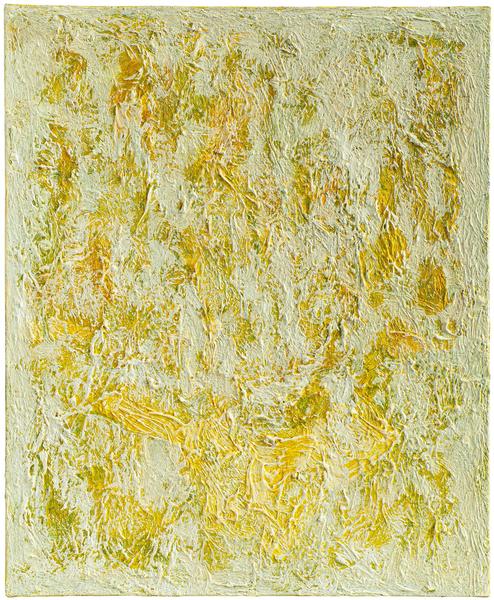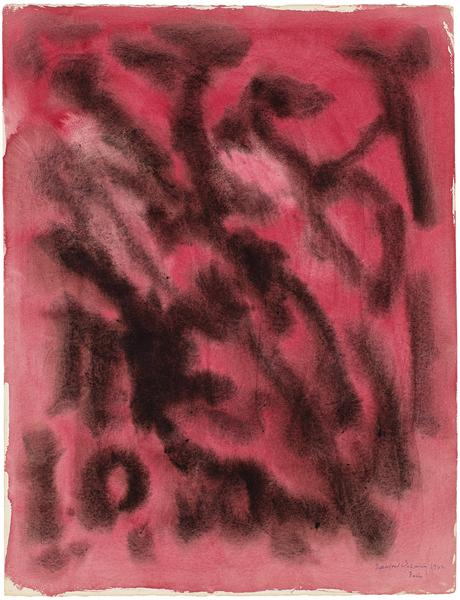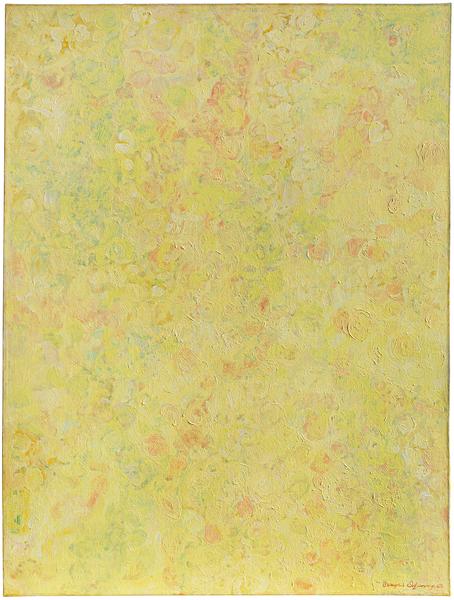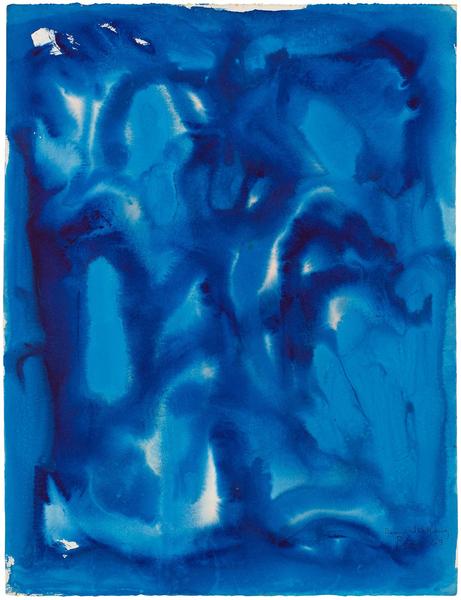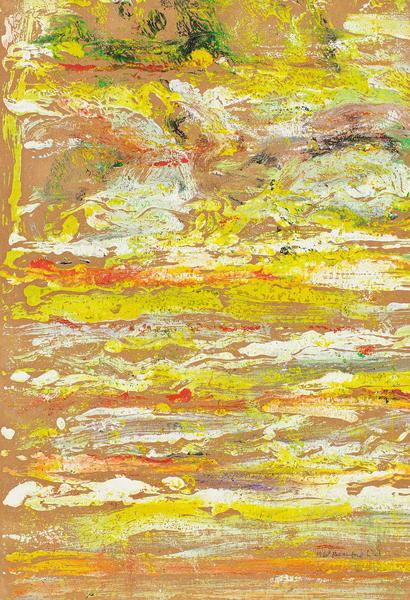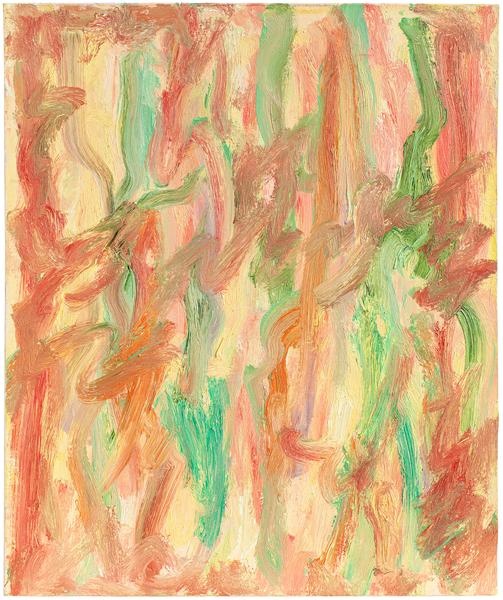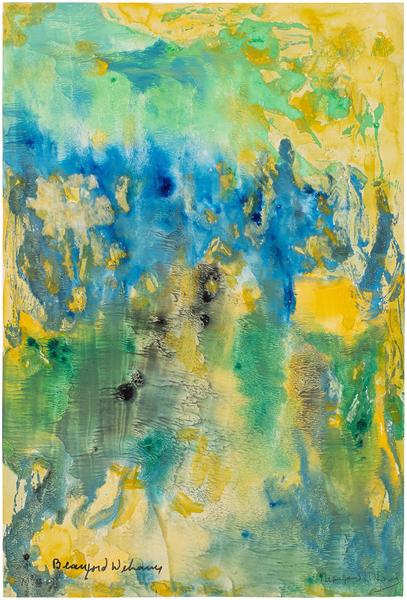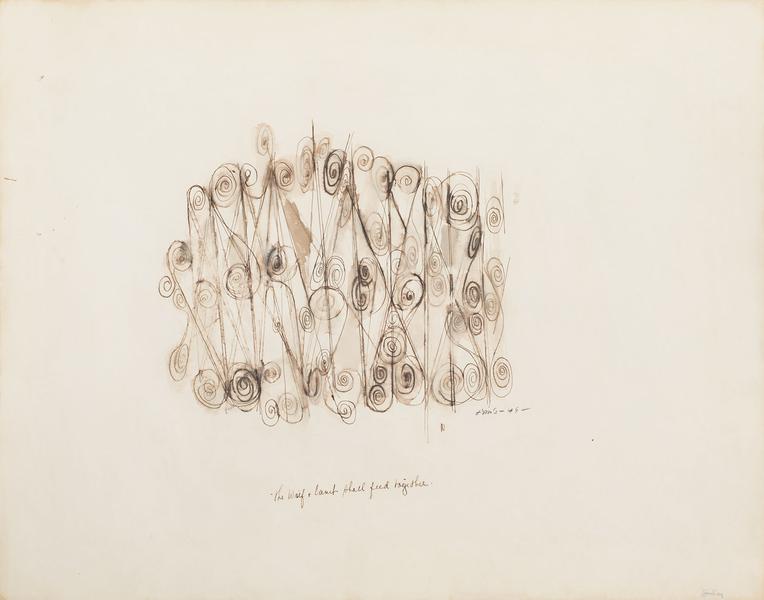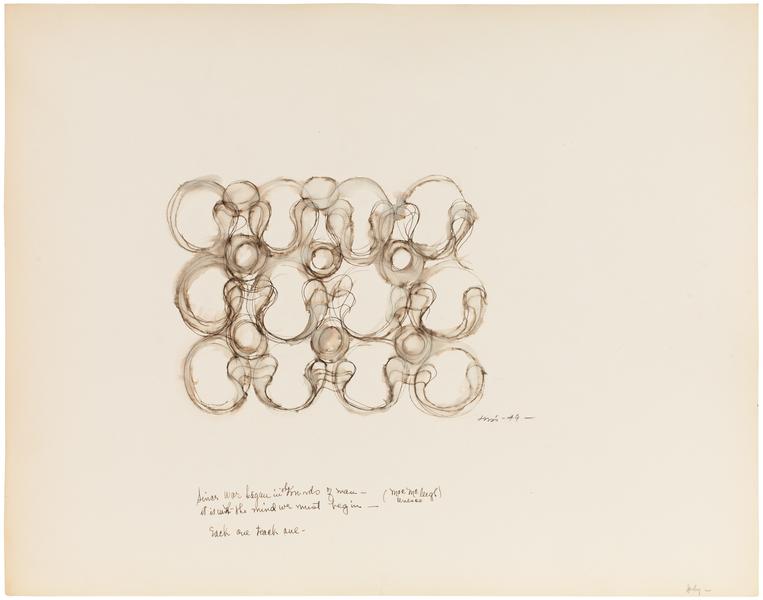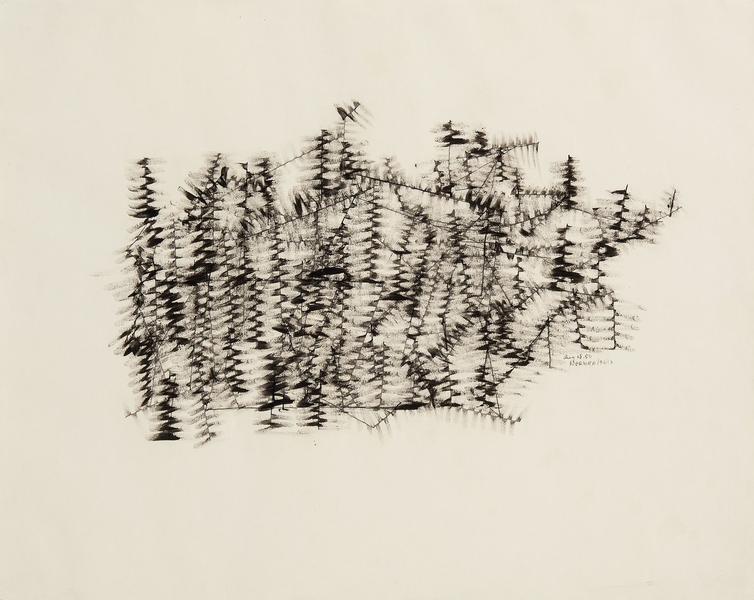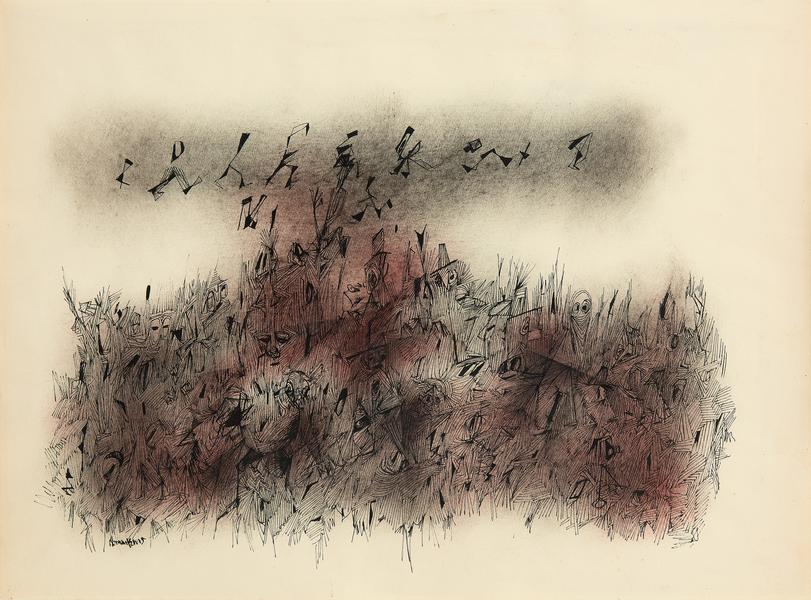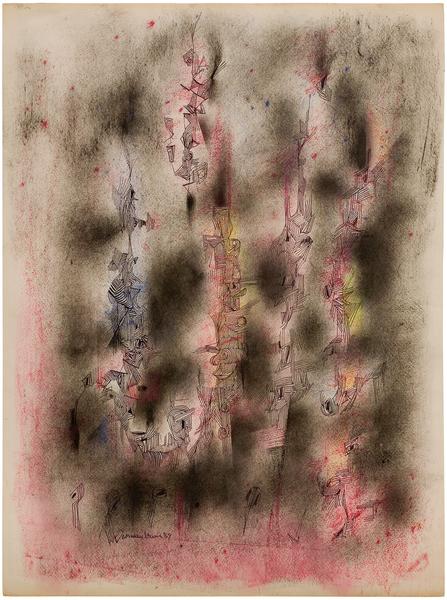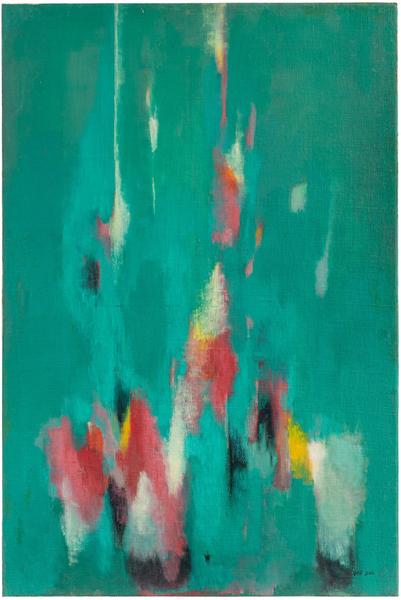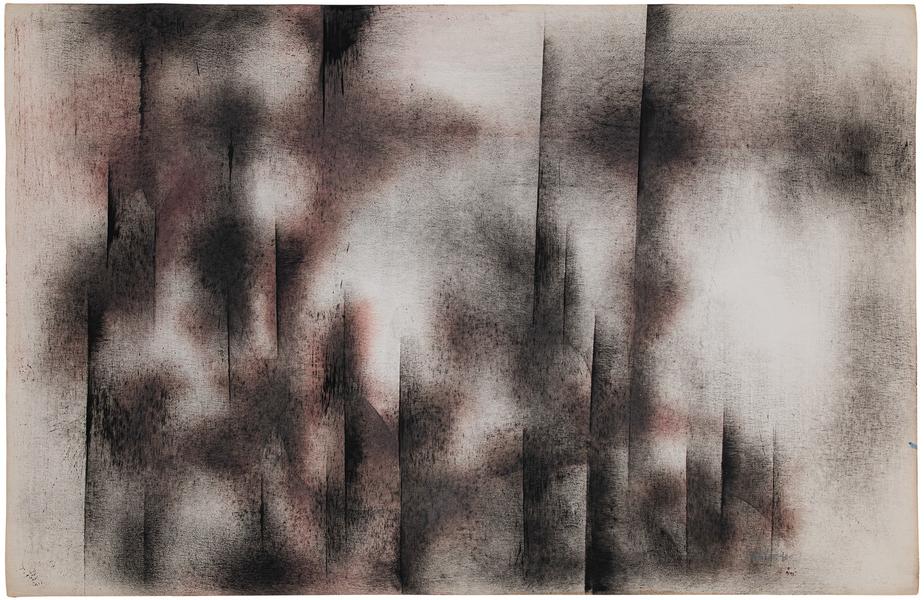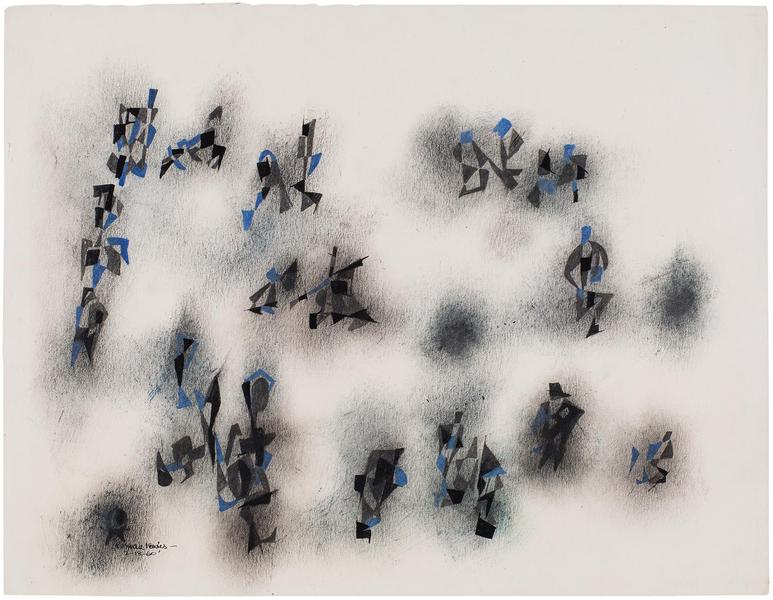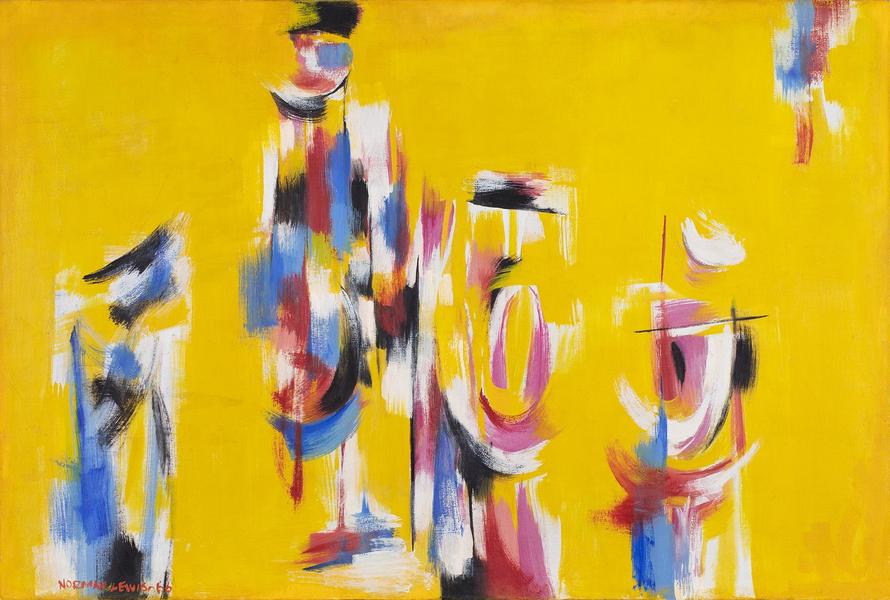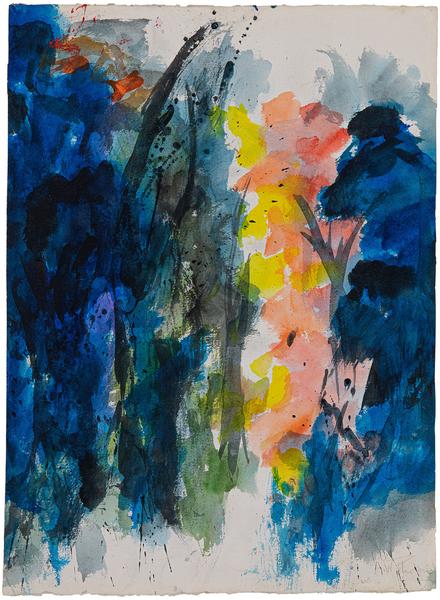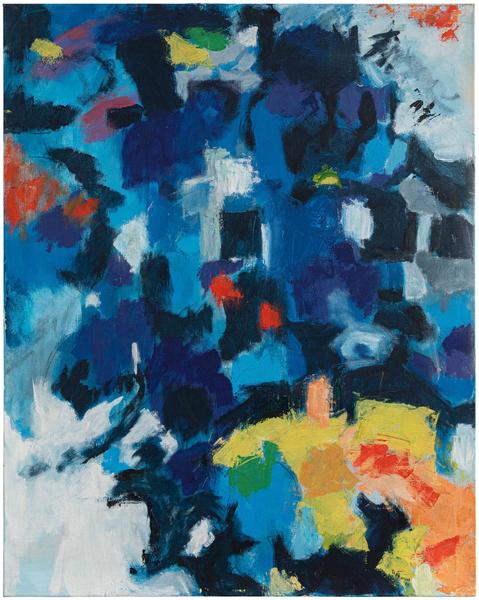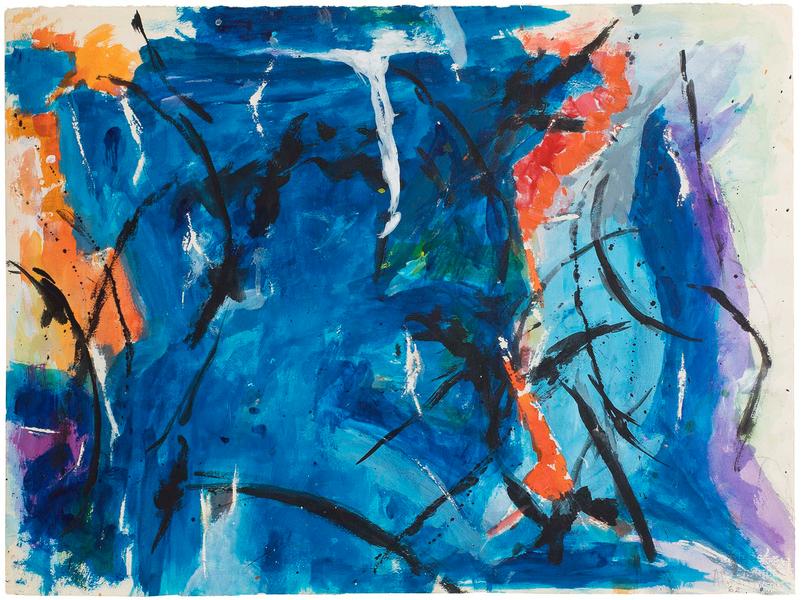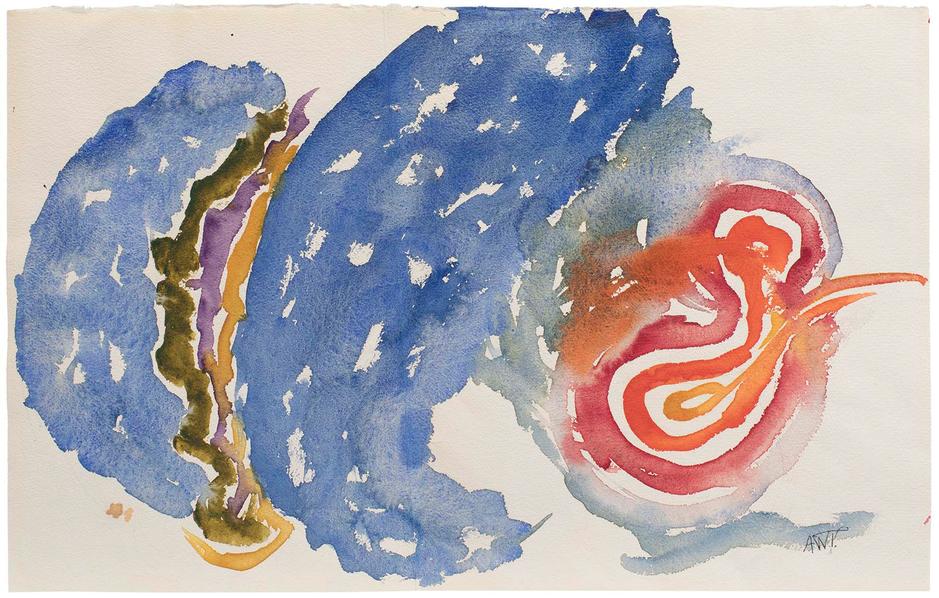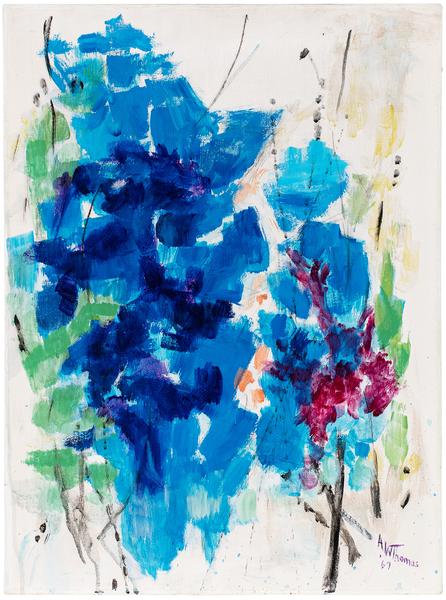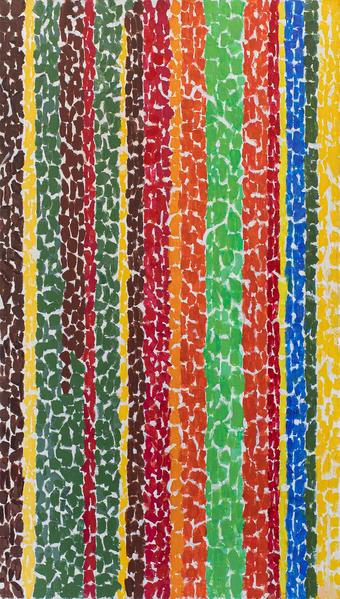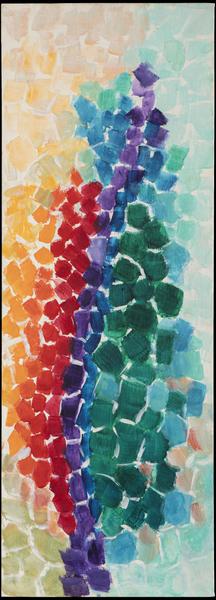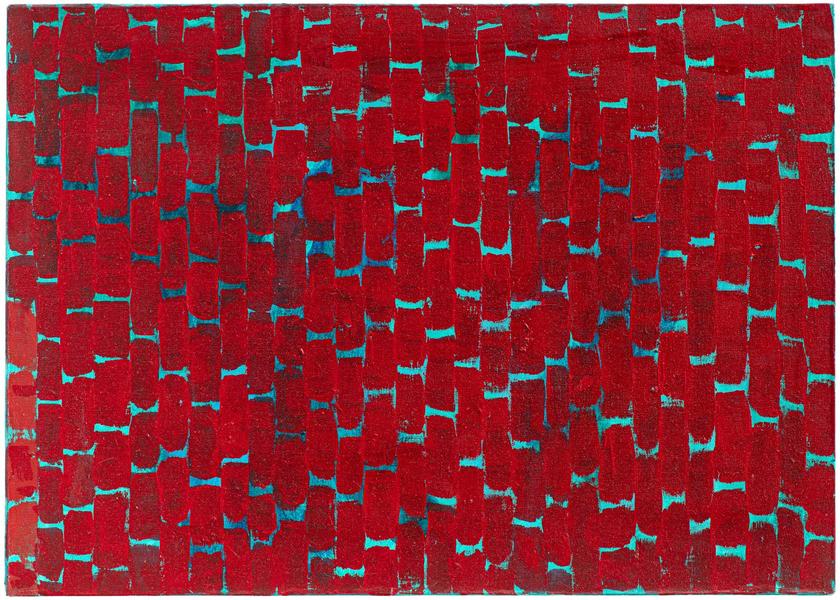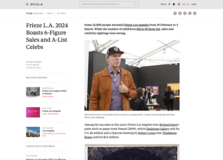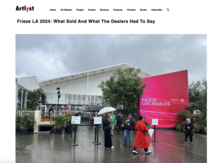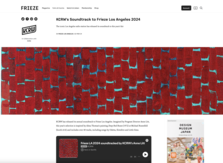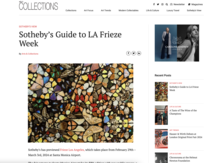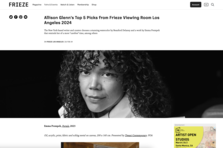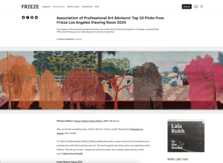Preview (invitation only)
Thursday, February 29, 10AM–7PM
Public Days
Friday, March 1, 11AM–7PM
Saturday, March 2, 11AM–7PM
Sunday, March 3, 11AM–6PM
Visit Michael Rosenfeld Gallery at Booth A16
Michael Rosenfeld Gallery is pleased to return to Frieze LA with an exhibition of major paintings and works on paper by Beauford Delaney, Norman Lewis, and Alma Thomas. Of the same generation and active in Paris, New York, and Washington, DC, respectively, these painters pioneered some of the most advanced approaches to abstraction of the twentieth century. Works on view at Booth A16 will focus on the most productive decades of the artists’ careers—the 1950s through the 1970s—presenting an illuminating survey of an unparalleled era in American painting.
Like their abstract expressionist contemporaries, Delaney, Lewis, and Thomas privileged the individual painterly gesture as a means to conveying an essential truth, each forging visionary approaches to non-objective painting predicated upon the authenticity of the brushstroke. All three artists were resolute in their commitment to abstraction throughout their careers despite inadequate critical and institutional attention as well as pressure from certain circles within their own community to create representational images that directly addressed the Black experience. As art historian Dr. Lowery Stokes Sims writes, these artists’ approaches to painting were grounded in their distinct but intersecting theories of abstraction: “For Delaney, abstraction’s significance came through in the healing properties of color; for Lewis, abstraction articulated the interaction of art and social events; and for Thomas, its critical aspect consisted of post-Post-Impressionist chromatic evocations of time, place, sensibility and mood.”[1]
Born and raised in Knoxville, TN, Beauford Delaney (1901–1979) cultivated a vivid, expressionist style of semi-representational painting during his twenty-three years in New York City’s Greenwich Village, where he settled in 1930. His turn to abstraction occurred shortly after he followed his dear friend James Baldwin to Paris in September of 1953—a pivotal moment in his life and work. Though he continued to create portraits for the rest of his career, Delaney’s primary output soon evolved into purely non-objective expressions of light and color, wherein gestural brushstrokes constitute both form and subject.
Booth A16 presents an exemplary selection of Delaney’s abstract works on canvas and paper including a large-scale painting of exceptional quality, Untitled (Waning Light: Abstraction) (1963). Demonstrative of the complexity of Delaney’s impastoed surfaces, this work is dominated by lyrical scumbles of bright yellow that swirl across a multicolored ground, constituting a wholly abstract exploration of the flickering light of early evening. Yellow was a particularly important color for Delaney, holding connotations of a spiritual, illuminatory radiance, and his yellow abstractions are widely admired as embodiments of exaltation, ecstasy, and rapture. As Baldwin once wrote, “When we stand in front of a Delaney painting, we are, my friends, in the light: and if in that light, which is both loving and merciless, we can confront each other, we are liberated by the perception that darkness is not the absence of light, but its denial.”[2]
Following a similar artistic trajectory, Norman Lewis (1909–1979) began his career in the 1930s as a social realist painter but eventually became disillusioned with art’s capacity to inspire social and political change. He began experimenting with abstraction in the 1940s, producing semi-representational cubist works before arriving at his mature, fully abstract style by the end of the decade. Born and raised in Harlem, Lewis lived in New York his entire life, drawing inspiration from the city’s creative scenes and daily bustle. Throughout the 1950s he honed his approach to abstraction, which typically involved diffuse atmospheres of color and delicate, calligraphic linework. Music and activism were central to Lewis’ life, and he subtly addressed these and other interests throughout his oeuvre. Exemplary of this impulse is Untitled (Players Four) (1966), which captures the improvisational energy of a jazz quartet in action. Simultaneously suggesting musical notations, the movements of the musicians, and the visual embodiment of sound itself, Lewis’ painting palpably conveys a rhythmic, free-flowing harmony through purely abstract means.
Another of Lewis’ major achievements, Untitled (1978) is a standout example of Lewis’ final series of works known as the Seachange compositions. Comprising a central motif of ovoid forms radiating outward, this painting on paper suggests the undulating movement of the sea, light reflecting off the water, and the reverberating sound of wind and waves. In titling these works with a term for a prevailing shift in public perception, Lewis imbues them with a political overtone, referencing the changing plight of Black Americans following the political upheavals of the 1960s. Taken as a whole, Lewis’ works embody the artist’s eloquently stated understanding of art as “the expression of unconscious experiences common to all men… In this sense, it becomes an activity of discovery, emotional, intellectual, and technical, not only for the artist but for those who view his work.”[3]
Born in Columbus, GA, Alma Thomas (1891–1978) was the first person to graduate from Howard University’s newly founded fine art department in 1924, after which she led a thirty-five-year career as an art teacher in Washington, DC public schools. She studied art at American University in the late 1950s, experimenting with realism before turning to abstraction after retiring from teaching in 1960, when she was able to devote herself full-time to painting. Throughout the 1960s, Thomas produced a vibrant body of works on paper defined by diaphanous washes of color, over which she applied elegant, linear brushwork and vibrant strokes of saturated pigment. Untitled (1962) is one of the best examples of this approach, reflecting Thomas’ interest in capturing the flitting optical effects and sensual colors of botanical subjects and scenes from nature.
Another noteworthy inclusion is Summer at Its Best (1968), a large-scale “stripe” painting comprised of rhythmic daubs of exuberant colors against a bright white ground. This work belongs to Thomas’s seminal Earth Paintings series, a group of works that constitute abstracted visions of the interaction between wind, light, and the flowers that were a beloved subject throughout her career. Inspired by the beauty of nature, the Space Race, and her own observations of earthly and celestial phenomena, Thomas’s paintings reflect her belief that art can transcend political and historical concerns. “Color is life,” she once stated. “Light is the mother of color. Light reveals to us the spirit and living soul of the world through colors.”[4]
Presenting a selection of works on canvas and paper exemplary of each artist’s oeuvre, Michael Rosenfeld Gallery’s Frieze LA exhibition offers a unique insight into a key era in the history of American painting. Though each artist expressed disparate ideas through their specific theories of abstraction, all three artists structured their painting practice around the seemingly boundless capacity of the brushstroke to convey their respective concerns through non-representational means. After decades of exploring the “potential of form, color and gesture to evoke the emotions of a given situation,”[5] as Sims writes, Delaney, Lewis, and Thomas passed away within a year of each other, leaving behind some of the most significant contributions to twentieth-century American art and providing a wealth of inspiration for future generations of abstract painters.
The works of Beauford Delaney, Norman Lewis, and Alma Thomas have been integral to Michael Rosenfeld Gallery’s program since its founding over thirty-five years ago. The presentation at Frieze LA revisits an exhibition the gallery organized in 2005, STROKE!: Beauford Delaney, Norman Lewis, & Alma Thomas, which was accompanied by a catalogue publishing original scholarship by art historian Lowery Stokes Sims. In addition to being consistently included in the gallery’s group exhibitions, Delaney, Lewis, and Thomas have each been the subject of multiple solo exhibitions at the gallery. In the fall of 2001, Michael Rosenfeld Gallery mounted Alma Thomas: Phantasmagoria, Major Paintings from the 1970s, for which an exhibition catalogue with an essay by Dr. Sims was published, and in the spring of 2015 Alma Thomas: Moving Heaven & Earth, Paintings and Works on Paper opened to widespread acclaim.
Michael Rosenfeld Gallery has organized six solo exhibitions of Lewis’ work: Norman Lewis: Intuitive Markings, Works on Paper 1945–1975 (May–August 1999); Norman Lewis: Abstract Expressionist Drawings, 1945–1978 (January–March 2009); Norman Lewis: PULSE, A Centennial Exhibition (November–December 2009); Norman Lewis: A Selection of Paintings and Drawings (January–March 2016); Norman Lewis: Looking East (November 2018–January 2019); and, most recently, Norman Lewis: Give Me Wings to Fly (September–November 2023), which was dubbed a “a tour de force presentation” by Donald Kuspit for Artforum. The gallery became the exclusive representative of the Estate of Norman Lewis in 2014 and has produced five catalogues on the artist publishing new scholarship by art historians David Anfam, Andrianna Campbell, Ruth Fine, and Tetsuya Oshima.
The gallery’s commitment to championing the legacy of Beauford Delaney is equally longstanding. In 1995, the gallery mounted Beauford Delaney: 1960s Paris, which was followed by Beauford Delaney: Liquid Light in 1999, for which a catalogue with an essay by Delaney biographer David Leeming was published. Michael Rosenfeld Gallery became a special advisor to and representative of the Estate of Beauford Delaney in 2018, after which the gallery organized the critically acclaimed exhibition Be Your Wonderful Self: The Portraits of Beauford Delaney (September–December 2021). The exhibition traveled to the Ogden Museum of Southern Art in 2022, when the gallery released an accompanying catalogue with an essay by Mary Campbell, Associate Professor of art history at The University of Tennessee, Knoxville, who is currently writing a biography on Delaney.
[1] Lowery Stokes Sims, “Stroke: Style, Technique, Culture and Politics,” in Stroke! Beauford Delaney, Norman Lewis and Alma Thomas, exh. cat. (New York: Michael Rosenfeld Gallery, 2005), p. 5.
[2] James Baldwin, quoted in Beauford Delaney, exhibition catalogue (Paris: Galerie Darthea Speyer, 1973), n.p.
[3] Norman Lewis, artist statement, quoted in the exhibition brochure for his October 1954 solo exhibition Norman Lewis at Willard Gallery, New York, NY
[4] Alma Thomas, quoted in Alma Thomas, exhibition catalogue (New York: Whitney Museum of American Art, 1972), n.p.
[5] Sims, “Stroke: Style, Technique, Culture and Politics,” p. 10.

